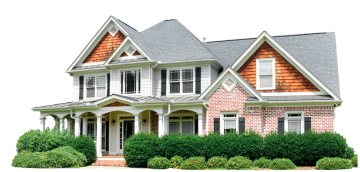Looking for a home that feels like a house, but costs less? Meet the Maisonette.
Have you ever heard a maisonette and thought, “Is it a flat? Or, something in-between? ” Don’t get confused and let us clear your confusion through this guide.
Maisonettes are one of the UK’s most misunderstood property types, but once you discover what they are, you might wonder why more people aren’t snapping them up.
So, let’s explore Maisonette houses more, including their meaning, purpose, costs, pros and cons, and how they compare to flats, duplexes, and traditional houses.
What is a maisonette house, and what is its purpose?
A maisonette is a two-level home that gives you the space and privacy of a house, but at a more affordable price point. Far from traditional flats, a maisonette usually has its own private entrance and internal stairs, so there is no need to share hallways or bump into neighbours on your way in.
It’s the middle ground between a house and a flat, designed for people who want a homely feel without the hefty price tag.
Characteristics of a maisonette: what makes it stand out?
- Private front door, no shared corridors. Just your own space.
- Split over two floors, feels more like a house than a flat
- Sometimes, it includes a garden, a major bonus in city living
- Two floors inside, with internal stairs
- Often converted from larger houses or above street-level shops.
- Legally considered a flat /maisonette, but feels like a small house
- It can be a leasehold or freehold, depending on the structure and conversion.
Different Types of Maisonette you can buy
If you think all maisonettes are the same, well, think again. Maisonettes come in a few different flavours, and each one offers something unique depending on your lifestyle, budget, and location. Here’s a breakdown of the main types of maisonette homes available across the UK:
Converted Maisonette: A Touch Of Period Charm
These are often found in Victorian, Edwardian, or Georgian houses that have been split into multiple flats. Converted maisonettes offer beautiful period features like high ceilings, bay windows, and ornate fireplaces. They often feel more spacious and characterful than modern builds, but may come with higher maintenance and varying lease structures.
Purpose-Built Maisonette: Modern & Functional Living
Built from the ground up with a maisonette layout in mind, these homes are typically found in post-war or contemporary housing estates. They’re often more energy-efficient, structurally uniform, and offer practical layouts suited for modern living. You may also find private parking and communal outdoor areas in these blocks.
Street-Level Maisonette: Great For City Living
These maisonettes are usually found above shops or commercial units, especially in busy urban areas. They often have their own external entrance at street level and are ideal for people who want a central location at a lower price. However, they may come with less space or some noise from below.
Scottish-Style Maisonette: The Duplex-Like Setup
Common in parts of Scotland, these maisonettes resemble duplex flats inside a larger block, where you may access your home through shared stairs or a communal hallway. They usually have two floors internally and are popular in council estates or regeneration areas, often offering more space for less cost.
Difference Between a Maisonette and a House
Maisonettes offer two-storey layouts and their own private entrance, giving them a house-like feel that many people love. However, they are still part of a larger building, which means they typically share walls or floors with their neighbours, which is similar to a flat. Most maisonettes in the UK are leaseholds, meaning you don’t own the land outright and may have to pay service charges.
On the other hand, a traditional house usually stands alone or forms part of a row, with its own plot of land. Houses are usually freehold, giving the owner full control over the property, including the roof, walls, and outdoor space. You’ll often get a front or back garden too, along with more privacy and fewer shared responsibilities.
What is the Difference Between a Flat and Maisonette and loft?
|
Features |
Maisonette |
Flat/Loft |
|
Entrance |
Own external front door |
Usually shared communal entrance |
|
Levels |
Typically two floors |
One level (loft may be split level inside shared structure) |
|
Feel |
More house-like |
Traditional apartment feel |
|
Access |
Private access to street |
Access via corridor or common hallway |
|
Privacy |
Privacy with Few neighbours |
Large block with more neighbours |
|
Maintenance cost |
Lower cost with no shared area |
Service charges often apply |
|
Layout |
Spread over two floors |
All rooms on a single floor |
Things to Consider about Maisonette Housing
Before you buy or rent a maisonette, there are a few important things you need to think about. These homes can be fantastic, but every detail matters when making the right choice.
Leasehold terms
Most maisonettes in the UK are leasehold, meaning you don’t own the land your property stands on. Check how many years are left on the lease, short leases can seriously affect resale value. Also understand the ground rent charges and if there’s potential to extend the lease or buy the freehold in the future.
Service charges
Some maisonettes come with monthly or annual service charges, especially those in purpose-built blocks. These fees might cover building maintenance, cleaning of shared areas, or building insurance. Always ask what’s included in the cost, so that you don’t have unexpected expenses creep up later.
Structural layout
Look closely at the layout, how the stairs divide rooms, where the kitchen and bathrooms are, and whether there’s room for storage. Some older maisonettes have awkward floor plans, especially if they’re conversions from older houses or shops. Think about your daily routines and whether the space flows naturally.
Soundproofing and noise
Because maisonettes usually share walls or floors with another unit, noise can be an issue. Check if the property has decent soundproofing. If you are on the lower floor, upstairs foot traffic might be noticeable. Visit at different times of day to get a real feel for it.
Potential for extension on loft conversions, outdoor space
Some maisonettes, especially upper-floor ones, have lofts that could be converted, and small gardens that allow rear extensions. But with leasehold properties, you’ll usually need the freeholder’s permission and may face planning restrictions. Always confirm before making plans.
Resale value & future demand
Maisonette can be more affordable upfront, but resale values vary depending on location, condition, and lease terms. Well-maintained maisonettes in sought after areas tend to hold value better. Look at recent local sales and talk to the agents about long term appreciation potential in the area.
Permitted development rights
If you are planning to extend or renovate your maisonette, don’t assume you can go ahead without restrictions. Maisonettes don’t benefit from the same permitted development rights as typical houses. That means you’ll likely need full planning permission for even small changes. Always check with your local planning authority and get your leaseholder’s consent before starting any work.
Pros and Cons of Maisonettes
Pros
- Own door = more privacy
- The two-storey layout feels like a house
- Often cheaper than a standalone house
- May have a small terrace or private gardens
Cons
- Usually, leaseholds have limited control
- Shared walls/floors = possible noise issues
- Less outdoor space than a house
- Some restrictions on extensions or modifications
Maisonette vs Duplex
|
Aspects |
Maisonette |
Duplex |
|
Definition |
Two storey, self-contained flat with own entrance |
A single building split into two separate units |
|
Ownership |
One home over two floors |
Each unit usually separate property |
|
Entrance |
Individual front door |
Separate front doors to each unit |
|
Layout |
Internal stairs within your home |
Separate internal or shared stair between units |
Are Maisonettes Leasehold or Freehold?
Most marionettes are leasehold, especially those in converted blocks. That means fixed lease lengths and possibly service ground rent. In rare cases, they may be freehold, but always check the title.
What is the average cost of a Maisonette in the UK?
Maisonettes tend to be more budget-friendly than traditional houses. As of early 2025, the average price for a flat or maisonette in England hovered around £225,000, while the overall average for all property types was closer to £291,000, according to national housing data.
By mid-2025, platforms like Zoopla reported average UK house prices at around £268,400, with flats and maisonettes generally priced a little lower. Official data from the HM Land Registry in March 2025 estimated the national average at £271,000.
So, if you are considering a maisonette, you can usually expect to pay somewhere between £200,000 and £230,000, depending on the property’s location, condition, and features.
FAQ’S
Sometimes, some maisonettes, especially street level, include small private gardens or terraces. But many do not, check listings.
In the UK, a maisonette is a flat spread over two floors with its own external entrance, giving a house-like feel within a large building.
A maisonette with two bedrooms, typically one on each floor or both upstairs, offering a compact yet functional layout for small families or couples.
Sometimes, subject to leaseholder rules, permissions, and structural layout. Extension ground-floor space or loft conversions may be possible but require landlord approval or planning permission.


 Describe your needs
Describe your needs
 it only takes 30 seconds
it only takes 30 seconds